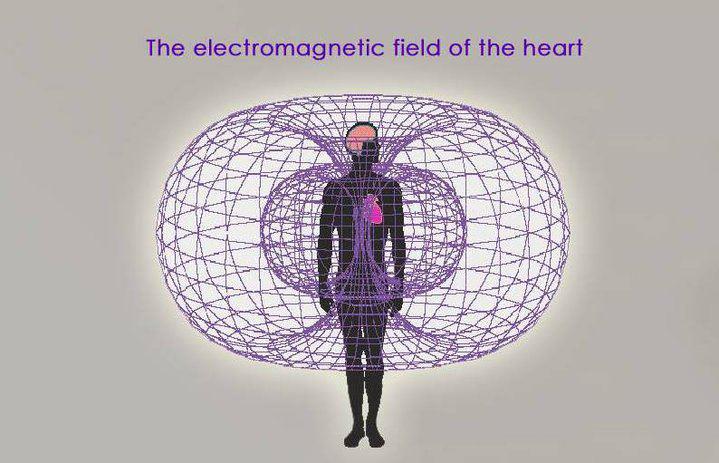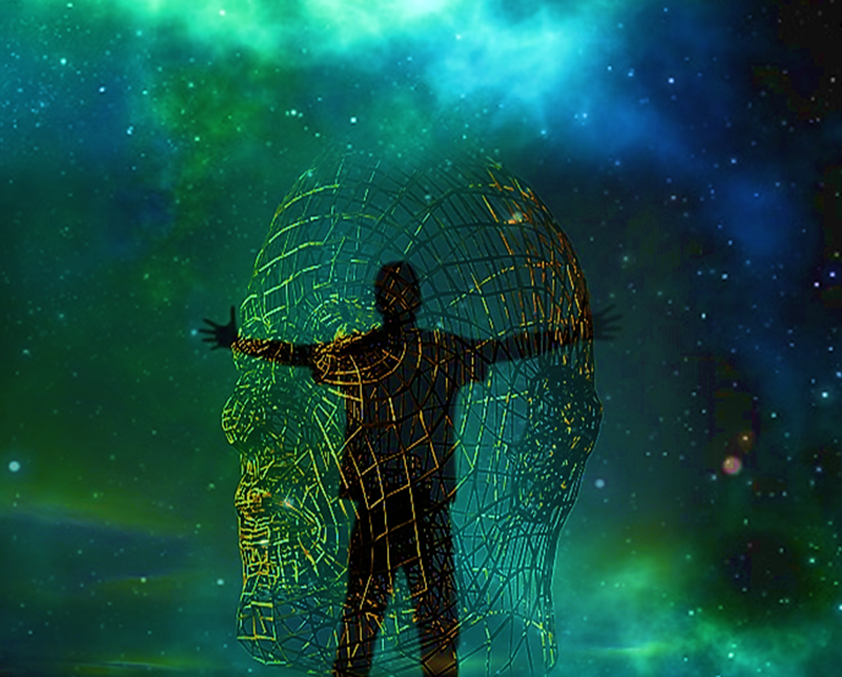Intelligence is traditionally viewed as a genetically endowed trait that can be characterized and measured by a cognitive test. The conventional view emphasizes the academic skills of linguistic and mathematical intelligence and downplays other talents and abilities, such as the imaginal dynamics of art, music, dance, and entrepreneurship, as well as the intuitive aspects required for effective relational interaction or mechanical inclination. In fact, there are many forms of intellectual acumen; some of these are malleable and do not readily lend themselves to accepted standards of measurement. In this article, we embrace broader concepts and definitions of intelligence and cognition, and focus on the various and sometimes mystifying ways in which intelligence manifests.
Ambient Communion
At its core, intelligence is a confluence of energy, the sentience of our conscious universe transmitted via the sensorium of the living organism. Each of us is tuned to individuate this organic sentience through our sensual interaction with the world around us. Nature is filled with distinctive voices that speak in the imagery of smell, taste, touch, sound and sight, reminding us that all of life is vital and interconnected. This ambient communion calls upon our elemental character and can stir profound perceptual realizations. Furthermore, a growing body of evidence in the scientific community attests to our sensitivity to electromagnetic energy fields, akin to the migratory ability of birds, which may effect neurological functioning and manifest as psychic ability. These findings share a basis with quantum energy theory and the concept of ‘unity consciousness’, which was propagated by the late Stephan Hawking, among others, and contemplates reality as all life forces, all existence, interacting within a single, unified framework.
You can learn more about this fascinating research in the article Finding The Psychic Science.
Heart Entrainment
Since 1991, the HeartMath Institute has researched and developed the science of bridging the connection between the heart and brain, pioneering the concept of heart intelligence or “heart entrainment.” This groundbreaking research has revealed the heart as a sophisticated sensory organ that receives and processes information—an organ capable of learning, memory, and functional decision making independent of the brain’s cerebral cortex. Numerous experiments have demonstrated that the heart continuously sends signals to the brain that influence the functions of perception, cognition, and emotional reactivity.

The heart generates the human organism’s most powerful electromagnetic field and permeates every cell in the body. Compared to the brain’s electromagnetic field, the electrical component of the heart’s field is about 60 times greater in amplitude, and the magnetic component is approximately 100 times greater.
Data from the HeartMath Institute’s rigorous experimental designs has produced evidence suggesting that the electromagnetic field of the heart interacts with the heart fields of other individuals to convey information and is conducive to transmissions from energy fields beyond the space/time continuum, accounting for perceptual aspects of consciousness such as intuition and precognition. The studies indicate that the heart’s electromagnetic energy field may link to subtle fields of energy containing holographic waveforms encoded with systemic information in non-local order. These compelling findings, which align with evidence of the unified field of conscious energy referenced above, have profound implications and support holonomic brain theory and the concept of reality as a quantum hologram.
You can learn more about this seminal experimental evidence in the article Heart Entrainment: Connecting Our Love Energy.
Multiple Intelligences
In his book, Frames of Mind: The Theory of Multiple Intelligences, psychologist and Harvard University professor Howard Gardner sets forth the theory that people are not limited to the mental intelligence measured by the typical IQ test. Instead, he proposes that we possess eight different types of intelligence which reflect the diverse ways we interact with the world.
Gardner posits that each of us possesses all eight intelligences, yet everyone has a unique profile, a signature of how these distinctive aptitudes fit together. Here are the eight types of intelligences:
- Visual-Spatial Intelligence: The ability to visualize things, such as being good with maps, charts, plans and diagrams.
- Verbal-Linguistic intelligence: The skill of effectively using words in both writing and speaking, and comprehending written work.
- Logical-Mathematical Intelligence: The ability to reason, recognize patterns and logically analyze problems.
- Bodily-Kinesthetic Intelligence: Excellent agility, hand-eye coordination and the ability to perform bodily movements such as sport and dance.
- Musical Intelligence: A strong appreciation for music and comprehension of rhythms and sounds; for some, the ability to compose and perform music.
- Interpersonal Intelligence: The ability to communicate well and to understand and interact with different people.
- Intrapersonal Intelligence: The skill and proclivity for self-awareness and self-reflection.
- Naturalistic Intelligence: The aptitude for nature and interest in nurturing and exploring the environment.
Dr. Gardner contends that academia and culture are too focused on linguistic and logical-mathematical intelligence, esteeming the highly articulate and/or logical people of our society. He believes we should place equal attention and value upon individuals who show gifts in the other intelligences: artists, architects, musicians, naturalists, designers, inventors, dancers, therapists, entrepreneurs, and others who enrich the world in which we live.
You can learn more about multiple intelligences at Howard Gardner’s official site, MI Oasis.
Brain Plasticity
The brain has the ability to reorganize itself by forming new connections between brain cells and is continually reshaping itself based upon our experiences. Changes in thinking, behavior, emotion and environment create alterations in the synapses of the brain and neural pathways of the central nervous system. This rewiring of brain circuitry is known and neurogenesis, or brain plasticity. One of the quickest and most effective ways to rewire brain circuitry is through the practice of mindfulness meditation. A set of landmark research studies demonstrated how mindfulness meditation promotes brain plasticity, with subjects having documented neuron growth in areas of the brain involving learning, memory, awareness, and emotional control, including increases in neurotransmission recorded by MRIs.

Research in neuroscience has shown enduring changes in baseline brain function—activity in response to specific emotional challenges that demonstrates brain plasticity―as a result of practicing mindfulness meditation.
By teaching us to pay deliberate attention to the current moment—without attachment to outcomes predicated upon past experiences or expectations for the future—mindfulness meditation helps us become more present in our lives. We learn to identify and challenge limiting beliefs and develop a more sensory-driven relationship with the world around us. We open ourselves to a non-judgmental existence based upon increased awareness and self-possession, fostering a potent connection of mind, body and spirit that diffuses stress and anxiety, expands cognition, and enjoins the enigmatic qualities of consciousness and intelligence.
You can learn more in the article Mindfulness Meditation & Brain Plasticity: The Science of Rewiring Neural Circuitry.
Creative Cognition
Researchers are actively seeking to define and account for the role of imagination in intelligence and correlate how this functions in the brain through neuroimaging. Cognitive psychologist Dr. Scott Barry Kaufman and neuroscientist Rex Young and their colleagues have been working to map out what is referred to as the default mode network, or the “imagination network.” This brain network has been largely ignored by cognitive scientists because it is mostly quiet when we are required to focus externally.
The imagination network is associated with daydreaming, retrieving memories and moderating emotional responses. This system is vitally important for internal reflection and assimilation of meaning, as well as triggering motivation, curiosity and learning. The instant we personally connect to something, our imagination network lights up. We begin making mental and emotional associations based not only upon our experiences, but our deepest seated aspirations—our hopes and dreams and secret longings.
While it is normal for the brain to toggle between the default mode network and the more outward-focused attention network, neuroscience is beginning to chart a more comprehensive understanding of this facet of creative cognition. Findings indicate that very creative people possess stronger connections between the networks and are better at navigating from one to the other.
“When I examine myself and my methods of thought, I come close to the conclusion that the gift of fantasy has meant more to me than my talent for absorbing positive knowledge.”
~Albert Einstein
Albert Einstein often compared his thinking and creative processes to that of poets and musicians, describing his insights as “a sudden rapture.” Many brilliant individuals, Einstein and Mozart among them, credit imagination as the source of their creativity and genius. Thus the implications of this compelling area of scientific study come as no real surprise: that integration of the default mode network—the imagination network—is implicit in the function of intelligence.
You can learn more about creative cognition and the role of imagination in intelligence by visiting The Imagination Institute.
Deductions
In consideration of the foregoing, perhaps it is prudent to suggest that attempting to quantify and measure the vast and inexplicable dynamics of intelligence poses profound limitations on human potential. While certain intellectual abilities can be ascertained and gauged to provide a baseline perspective, the testing and labeling of intelligence quotients is at best a starting point in identifying the many capacities of the learning mind.
The agencies that formulate consciousness and intelligence, both our internal interactions and those with the living, breathing universe, are not yet fully defined or understood by science. Yet these are processes that continue throughout our lives and can be altered and enhanced in any number of effective and significant ways. We can partake in the sanctity of ambient communion, practice meditation to expand our cognitive facilities, cultivate our creativity, and entrain our hearts to better transmit information encoded in the unified field of conscious energy. Indeed, we can focus and develop the multiple intelligences that comprise our unique manifestation of organic sentience—our fingerprint upon reality.
©2018 by Shawn Quinlivan, C.Ht. & Cathexis Therapeutic Imagery. All rights reserved.

